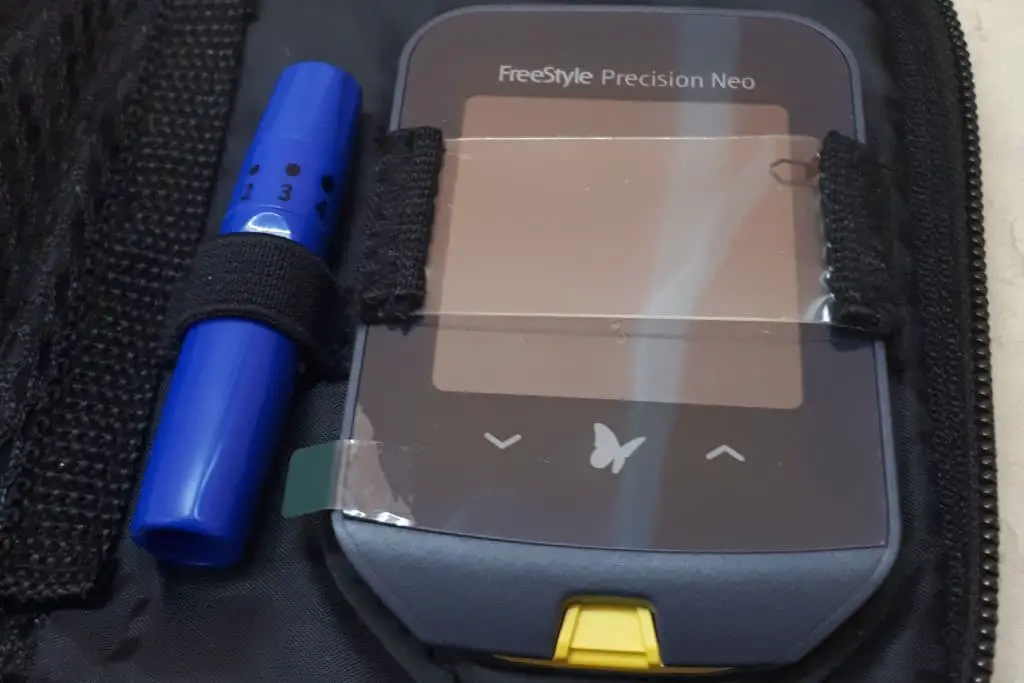
You might be wondering, “Why do I need to take care of my glucose monitor and lancing devices? Can’t I just use them and be done with it?” Well, here’s the deal: taking care of your blood glucose monitor and lancing devices isn’t just about making them last longer. It’s also about making sure you’re getting accurate readings. After all, your health decisions are based on those numbers, so you want them to be spot on.
Plus, a little regular maintenance can save you from potential hassles down the road, like your monitor suddenly dying on you or a lancing device that’s painful to use. So, let’s dive into how you can keep these tools in top shape.
1. Keep It Clean: Your Blood Glucose Monitor Deserves It
Your blood glucose monitor is your go-to device for checking your sugar levels, so it’s essential to keep it clean and happy.
Wipe It Down Regularly
First things first: dust and dirt are your monitor’s worst enemies. Give your monitor a quick wipe down with a soft, lint-free cloth at least once a week. If you notice any smudges or sticky spots, dampen the cloth slightly with water (just a little bit, though—don’t soak it!). Stay away from harsh chemicals or alcohol wipes, as these can mess with the screen or other parts of the monitor.
Check the Test Strip Port
The test strip port is where all the magic happens, so you’ll want to keep it free from gunk. Every now and then, take a peek inside to make sure there’s no dirt or residue building up. If you see anything, gently clean it out with a soft brush or a cotton swab. Just be gentle—you don’t want to damage anything in there.
Keep an Eye on the Battery
Your monitor needs juice to work, so don’t forget about the batteries. Most monitors will give you a heads-up when the battery is running low, but it’s a good idea to check it regularly anyway. If your monitor starts acting wonky or giving strange readings, the battery could be the culprit. Replace it with the type recommended by the manufacturer to keep things running smoothly.
Store It Safely
When you’re not using your monitor, keep it in a cool, dry place—preferably in the case that came with it. Avoid leaving it in the bathroom (humidity) or near windows where it could get too hot or too cold. And if you’re traveling, make sure it’s packed securely to avoid any bumps or drops that could cause damage.
Calibrate and Test It
Some monitors require periodic calibration to ensure accurate readings. Refer to your monitor’s user manual for instructions on how to calibrate it. Some monitors require a control solution for this process.
Test your monitor’s accuracy regularly using control solution tests, especially if you notice unusual readings. If the monitor shows consistently inaccurate readings, consider contacting the manufacturer for further guidance.
2. Don’t Forget About Your Lancing Device
Your lancing device might be small, but it plays a big role in your diabetes care. It’s what gets you that drop of blood for testing, so keeping it in good shape is super important.
Clean It Up
Just like your monitor, your lancing device needs a little cleaning too. After each use (or at least once a week), give it a wipe down with a damp cloth. If there’s any blood or dirt on it, use a bit of mild soap and water to clean it up. Just make sure it’s completely dry before you use it again. And whatever you do, don’t dunk it in water—most lancing devices aren’t waterproof!
Swap Out the Lancets
This is a biggie: never, ever reuse a lancet. It might be tempting to save a few bucks by using the same one a couple of times, but trust me—it’s not worth it. Reusing lancets can lead to dull needles, which are not only more painful but can also increase your risk of infection. Plus, used lancets can mess with the accuracy of your readings. So play it safe and use a fresh lancet every time.
Adjust the Depth Setting
Most lancing devices come with an adjustable depth setting, which lets you control how deep the needle goes. This is great because it means you can find a setting that’s comfortable for you. If you’re not getting enough blood, try turning the depth up a notch. If it’s too painful, dial it back. It’s all about finding what works best for you.
Store It Right
Just like your monitor, your lancing device needs a safe, dry spot to hang out when you’re not using it. Keep it in its case, away from heat, moisture, and direct sunlight. And if you’re on the go, make sure it’s stored securely so it doesn’t get damaged.
Do Some Regular Inspection
Regular inspection of your lancing device helps identify any wear and tear or potential issues that could affect its performance. Check the device regularly for signs of wear, such as cracks, loose parts, or difficulty in operating the device.
If you notice any issues, consider replacing the lancing device or consulting the manufacturer for repairs or replacements. Ensure that the lancet insertion mechanism is working smoothly, and there are no obstructions or damage that could affect the device’s operation.
3. A Few Extra Tips for Both Devices
Follow the Manufacturer’s Guidelines
This might sound like a no-brainer, but it’s worth mentioning: always follow the instructions that come with your devices. The manufacturer knows these tools inside and out, so their advice is gold. Whether it’s how to clean the device or when to replace parts, stick to their guidelines to keep things running smoothly.
Routine Testing
Regular testing of your devices’ accuracy is crucial for reliable glucose readings. Use control solutions to test your blood glucose monitor periodically. Ensure that the lancing device is functioning correctly and not causing unnecessary pain or difficulty.
Watch Those Expiry Dates
Test strips and control solutions have expiry dates for a reason. Using expired materials can lead to inaccurate readings, which is the last thing you want. Make it a habit to check the dates regularly and toss out anything that’s past its time.
Wrapping It Up
Taking care of your blood glucose monitor and lancing devices doesn’t have to be a chore. With just a little bit of regular maintenance, you can keep these tools working their best, helping you stay on top of your diabetes management. Plus, you’ll save yourself from the frustration of dealing with broken or inaccurate devices.
Remember, these tools are here to help you, so treat them with the care they deserve. And if you ever have any doubts or run into issues, don’t hesitate to reach out to the manufacturer or your healthcare provider. They’re there to help too!
